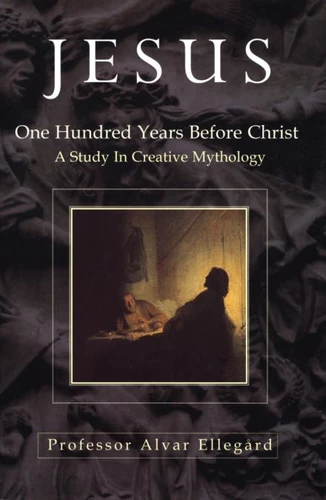Jesus. One Hundred Years Before Christ - A Study In Creative Mythology
Par :Formats :
Disponible dans votre compte client Decitre ou Furet du Nord dès validation de votre commande. Le format ePub protégé est :
- Compatible avec une lecture sur My Vivlio (smartphone, tablette, ordinateur)
- Compatible avec une lecture sur liseuses Vivlio
- Pour les liseuses autres que Vivlio, vous devez utiliser le logiciel Adobe Digital Edition. Non compatible avec la lecture sur les liseuses Kindle, Remarkable et Sony
- Non compatible avec un achat hors France métropolitaine
 , qui est-ce ?
, qui est-ce ?Notre partenaire de plateforme de lecture numérique où vous retrouverez l'ensemble de vos ebooks gratuitement
Pour en savoir plus sur nos ebooks, consultez notre aide en ligne ici
- Nombre de pages336
- FormatePub
- ISBN978-1-4481-0819-0
- EAN9781448108190
- Date de parution31/12/2011
- Protection num.Adobe DRM
- Infos supplémentairesepub
- ÉditeurCornerstone Digital
Résumé
The starting point for the book is the following anomoly: If Jesus lived as has been supposed at the beginning of the 1st century AD, the only NT documents written by a near contemporary, the Epistles of St Paul, make no mention of him as an historical figure, neither do they record any of his sayings, but rather they talk of him as a vision or mystical experience of the risen Christ. Further, the same is true of the earliest Christian non-NT texts, such as the Epistles of St Clement, roughly contemporary with Paul.
Furthermore, contemporary records of the region from non-Christian sources, such as those by the Jewish historian Josephus, fail to mention Jesus at all where we would expect them to; the mentions that there are have recently been shown to be later interpolations by medieval Christian apologists - the gospel accounts of Jesus and his millieu are inaccurate in all major respects e. g. the relative dates of Herod and Pilate, if contemporary Roman and Jewish historians, who had no theological axe to grind, are taken as measure.
By comparative textual studies, the author shows that the gospel accounts of Jesus' life and sayings were written approximately 100 years after Jesus is supposed to have lived, and so 100 years later than alleged contemporaries such as Paul, Clement, Josephus etc.
Furthermore, contemporary records of the region from non-Christian sources, such as those by the Jewish historian Josephus, fail to mention Jesus at all where we would expect them to; the mentions that there are have recently been shown to be later interpolations by medieval Christian apologists - the gospel accounts of Jesus and his millieu are inaccurate in all major respects e. g. the relative dates of Herod and Pilate, if contemporary Roman and Jewish historians, who had no theological axe to grind, are taken as measure.
By comparative textual studies, the author shows that the gospel accounts of Jesus' life and sayings were written approximately 100 years after Jesus is supposed to have lived, and so 100 years later than alleged contemporaries such as Paul, Clement, Josephus etc.
The starting point for the book is the following anomoly: If Jesus lived as has been supposed at the beginning of the 1st century AD, the only NT documents written by a near contemporary, the Epistles of St Paul, make no mention of him as an historical figure, neither do they record any of his sayings, but rather they talk of him as a vision or mystical experience of the risen Christ. Further, the same is true of the earliest Christian non-NT texts, such as the Epistles of St Clement, roughly contemporary with Paul.
Furthermore, contemporary records of the region from non-Christian sources, such as those by the Jewish historian Josephus, fail to mention Jesus at all where we would expect them to; the mentions that there are have recently been shown to be later interpolations by medieval Christian apologists - the gospel accounts of Jesus and his millieu are inaccurate in all major respects e. g. the relative dates of Herod and Pilate, if contemporary Roman and Jewish historians, who had no theological axe to grind, are taken as measure.
By comparative textual studies, the author shows that the gospel accounts of Jesus' life and sayings were written approximately 100 years after Jesus is supposed to have lived, and so 100 years later than alleged contemporaries such as Paul, Clement, Josephus etc.
Furthermore, contemporary records of the region from non-Christian sources, such as those by the Jewish historian Josephus, fail to mention Jesus at all where we would expect them to; the mentions that there are have recently been shown to be later interpolations by medieval Christian apologists - the gospel accounts of Jesus and his millieu are inaccurate in all major respects e. g. the relative dates of Herod and Pilate, if contemporary Roman and Jewish historians, who had no theological axe to grind, are taken as measure.
By comparative textual studies, the author shows that the gospel accounts of Jesus' life and sayings were written approximately 100 years after Jesus is supposed to have lived, and so 100 years later than alleged contemporaries such as Paul, Clement, Josephus etc.



